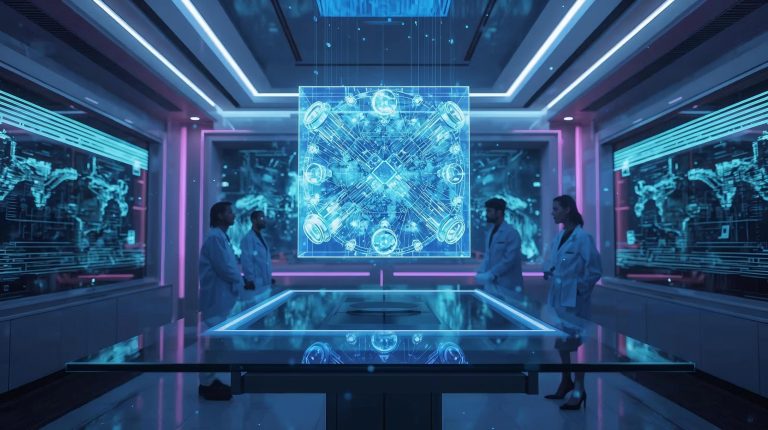
Behind every intelligent system lies a massive network of servers and power demands driving the digital race forward.
AI energy costs are now shaping the digital age in profound ways. Every tech leap starts with a quick click, a voice command, or a line of code.
Yet, few people realize that these modern marvels depend on massive data centers consuming huge amounts of power.
This is not just a story about electricity; it’s about how our demands for smart technology are testing the world’s energy systems and environment like never before.
The Hidden Price Behind Every Answer
Every day, billions of AI-powered requests flow through racks of powerful computers housed in nondescript buildings. These data centers now account for about 4% of U.S. electricity use, with global demand set to more than double in just a few years.
When you send a simple AI prompt to a service like ChatGPT, it uses about as much energy as lighting a bulb for twenty minutes. At scale, those tiny costs add up quickly.
Training modern AI models is even more intense. Building a state-of-the-art system can use as much power as a small city for weeks.
The machines generate enormous heat, so more electricity is needed just to keep them cool. Add in day-to-day image generation, voice services, and smart assistants, and the global thirst for energy is clear.
Experts predict that by 2030, the AI boom could put an extra 1.7 gigatons of carbon emissions into the atmosphere, close to Italy’s total emissions in five years.
Ripple Effects Across Communities
These impacts are more than numbers on a spreadsheet. The world is seeing real effects on infrastructure and daily life.
For example, in Ireland, data centers already use almost one-fifth of the country’s electricity. In water-stressed regions like Arizona or Nevada, new AI buildouts put pressure on scarce natural resources.
One new data center can need millions of gallons of water a year for cooling, creating a tough tradeoff in places facing drought. Not every community feels these changes the same way.
In Louisiana, a mostly rural county, it recently became host to one of the world’s largest data centers. Locals saw jobs and economic growth, but questions soon followed about who pays for the massive energy demand and how it will change their way of life.
Utilities consider raising rates, while city planners debate how much more their grid can handle. These ripple effects extend far outside the tech world.
A Race for Solutions
Tech leaders, scientists, and policy makers all recognize these growing challenges. Some companies invest in more efficient chips that can run AI with less energy.
Others are building new centers near sources of renewable energy, or adopting smarter cooling systems to cut water use and emissions.
A recent roadmap from Cornell researchers highlights how better siting and fast grid decarbonization could cut AI’s extra carbon pollution by more than seventy percent, if industry and governments act quickly.
Small changes add up: capping the energy available to certain processors, scheduling AI training for off-peak hours, and prioritizing more efficient models can all make a difference.
Google, Microsoft, and other tech giants are promising net-zero operations, but making these targets real will require coordinated planning, innovation, and transparency.
The Human Side of AI Energy Costs
Ultimately, these issues circle back to people. The digital race is powered by choices. As we ask machines to do more thinking, sorting, and creating, we also ask more of the invisible infrastructure in our cities and countryside.
Residents near new data center clusters face higher utility bills, while communities with water shortages fear further strain. Workers welcome new jobs, but wonder what growing demand means for long-term resilience.
Why This Story Matters
AI energy costs are the true price of digital transformation. Understanding them gives everyone a stake in the future, from tech insiders to everyday readers.
This decade’s choices will determine whether smarter machines speed up a shift toward clean, sustainable energy or become a burden for communities and the planet.
The next time you marvel at how far technology has come, remember the hidden journey of each bit and byte.
Being thoughtful about AI energy costs is not just good planning; it may be the difference between progress that lifts everyone and progress that leaves hidden costs behind.



